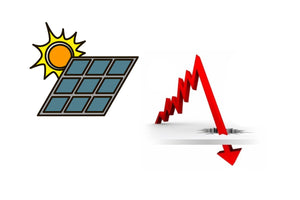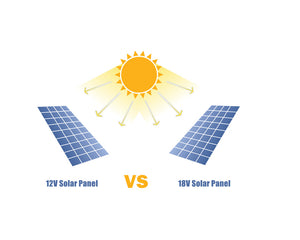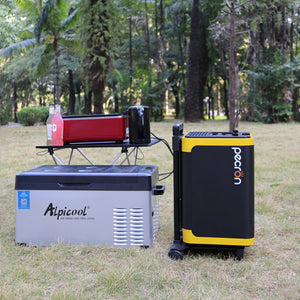- Apr 19
- Par Pecron LLC
What is solar charge controller?
Solar charge controller is a regulator manages the power going into the battery bank or system load from the solar array, it is an essential part in every solar energy system to keep the battery from overcharging by regulating the voltage and current coming from the solar array to the battery bank.
There are two types of built-in charge controllers in modern solar generator, as known as portable power station, which are PWM (Pulse Width Modulation) and MPPT (Maximum Power Point Tracking).
How they work differently?
PWM controller pulls down the solar array output voltage to just above the battery’s voltage constantly, the battery would not charge if the battery and solar panel both started at the same voltage. The voltage output of the solar panel rises as the battery charges.
If you using a 100W 12V(AKA 18V) solar panel with PWM controller to charge a 12V battery
Current= Wattage/Voltage=100W/18V = 5.56A
The actual input power will be 12V X 5.56A = 72W (28% energy loss)
If you using a 100W 24V(AKA 36V) solar panel with PWM controller to charge a 12V battery
Current= Wattage/Voltage=100W/36V = 2.78A
The actual input power will be 12V X 2.78A = 36W (64% energy loss)
*Note that the actual voltage of a so-called 12V solar panel is close to 18 Vmp (Voltage at maximum power), it named 12V because it is designed to work with a 12V battery. Please refer to the article "What's the difference between 12V and 18V panels?" for more detail.
MPPT charge controllers, on the other hand, can not only match the solar array output voltage to the battery voltage via a smart “DC to DC converter”, but also regulate its current in the same ratio as the voltage is dropped to maximize the efficiency of a solar system. In general, power goes into the MPPT charge controller equals the power goes out of it, when the voltage is dropped to match the battery bank, the current is raised, so you are virtually using all available power from the solar array.
If you using a 100W 12V(AKA 18V) solar panel with MPPT controller to charge a 12V battery
Current= Wattage/Voltage=100W/12V = 8.33A
The actual input power will be 12V X 8.33A = 100W (no energy loss)
Ignoring voltage drop-down in the electronics and cables, there will be virtually no energy loss
Summary of other Pros and Cons of MPPT and PWM
| Pros | Cons | |
| MPPT |
|
|
| PWM |
|
|













































